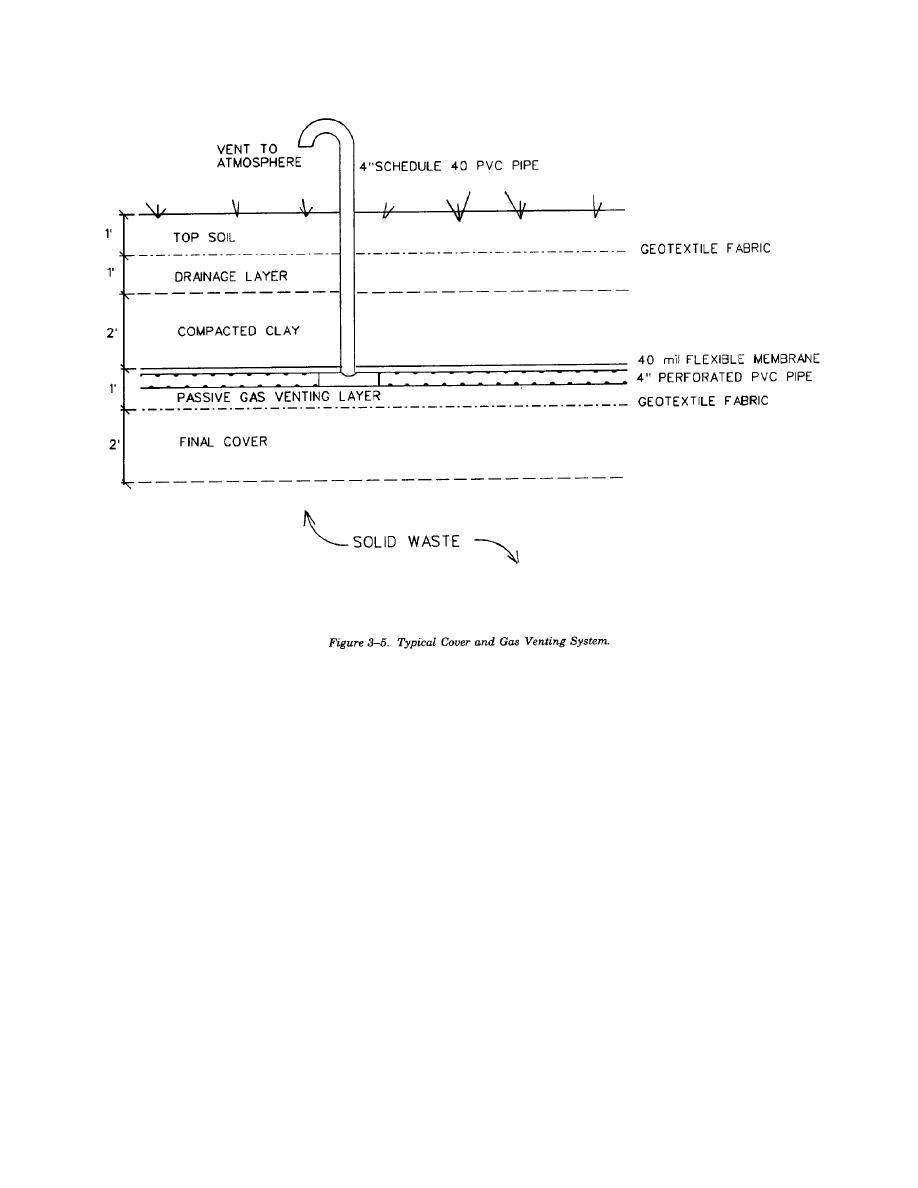
TM 5-814-5
(2) The minimization and containment of lea-
up primarily of fatty acids. Leachate from older
chate within a landfill ultimately depends on the
landfills may have only 10 percent organic content,
design of the landfill. Providing an impervious
which will be predominantly humic and fulvic acid.
cover, minimizing the working face of the landfill,
In some landfills the metals content in the leachate
and limiting liquids to household containers and
has decreased with age, but in many others it has
normal moisture found in refuse, are all methods
greatly increased with age. Leachate from younger
that will minimize leachate production. Studies
landfills generally has a higher pH than older
show that recycling leachate through the landfill can
landfills. Table 3-1 lists some of the characteristics
speed up stabilization.
and common constituents of leachate for municipal
b. Composition of Leachate.
landfills.
(1) The composition of leachate will determine
(3) Requirements for controlling leachate from
the potential effect it will have on the quality of
sanitary landfills are based on Federal and state
nearby surface and ground-water. Specific contam-
laws and regulations.
c. Leachate Collection.
inants carried in leachate vary, depending on what
is in the solid waste, and on the simultaneous
(1) Design of Collection Systems.
(a) The fundamental approach in controlling
physical, chemical, and biological processes occur-
ring within the landfill.
leachate is first to confine leachate to the limits of
(2) The chemical and biological characteristics
the landfill, then to collect and dispose of it safely.
(b) For collection techniques to be successful
of leachate depend on constituents found in the
solid waste, the age of the landfill, degree of
an impermeable soil barrier or artifical liner must be
compaction, and climatological conditions, which
in place to confine the leachate, and to deliver it to
includes ambient temperature and rainfall. Young
the disposal site. The most common type of
landfills, generally those less than 5 years old,
collection system utilizes gravity drainage and
produce leachate with a high organic content made
consists of a layer of sand and/or gravel underlain
3-5



 Previous Page
Previous Page
